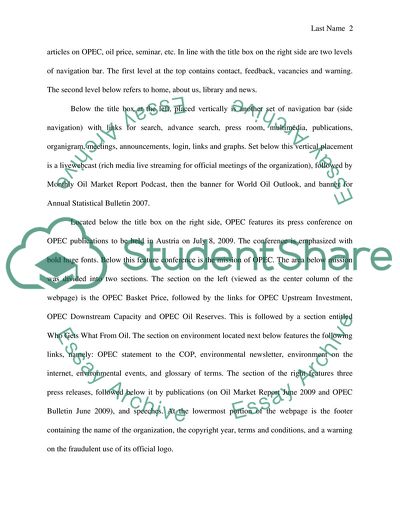Cite this document
(Critique of the OPEC Website Assignment Example | Topics and Well Written Essays - 1250 words, n.d.)
Critique of the OPEC Website Assignment Example | Topics and Well Written Essays - 1250 words. https://studentshare.org/information-technology/1725323-critique-of-the-opec-website
Critique of the OPEC Website Assignment Example | Topics and Well Written Essays - 1250 words. https://studentshare.org/information-technology/1725323-critique-of-the-opec-website
(Critique of the OPEC Website Assignment Example | Topics and Well Written Essays - 1250 Words)
Critique of the OPEC Website Assignment Example | Topics and Well Written Essays - 1250 Words. https://studentshare.org/information-technology/1725323-critique-of-the-opec-website.
Critique of the OPEC Website Assignment Example | Topics and Well Written Essays - 1250 Words. https://studentshare.org/information-technology/1725323-critique-of-the-opec-website.
“Critique of the OPEC Website Assignment Example | Topics and Well Written Essays - 1250 Words”. https://studentshare.org/information-technology/1725323-critique-of-the-opec-website.


